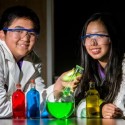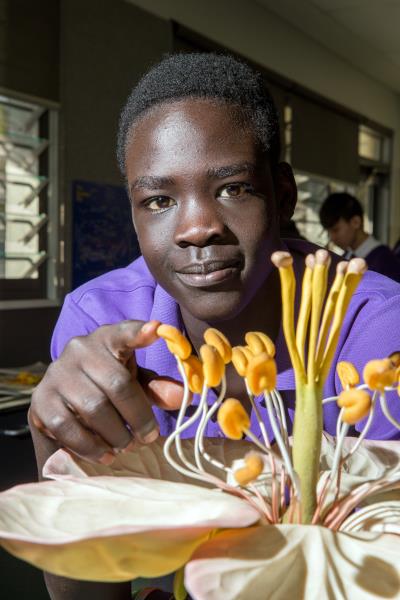By CASEY NEILL
BUDDING boffins can pursue their passion in purpose-built labs at Keysborough College.
The school opened the Heather Lindsey STEM Centre at its Banksia Campus in Springvale South last Wednesday 3 June.
The science, technology, engineering and mathematics building was named after the school’s first principal following the Springvale, Heatherhill, Coomoora and Chandler secondary college amalgamation in 2008.
Campus principal Patrick Boyd said Ms Lindsey retired last year but was at the official opening and was thrilled.
“I think that it’s very fitting that the founding principal of Keysborough College be remembered in such a way,” he said.
“It was due to Heather’s great planning that we were able to raise the college funds to build the centre.
“It was built through college funds only, there was no government money.”
Mr Boyd said architects designed the centre with input from teachers and guidance from Monash University’s science faculty.
“It was primarily designed for students who show a high interest and aptitude in maths and science,” he said.
“We have a select-entry Year 10 course which offers students an inquiry-based science, technology and maths curriculum with application to real-life technology-based problems.
“It’s very much a course where we’re building application rather than just straight knowledge.
“We’ve taken the advice of our colleagues at Monash University and the course is designed to point students towards the STEM streams at university.
“A lot of what we’re doing here is aimed to try and improve the uptake of girls to science, and in particular to engineering.”
Mr Boyd said STEM was the way forward for Australia, particularly after the mining bubble burst.
“We’re now looking to be re-recognised as a clever country and it’s certainly within these STEM areas that we are particularly clever,” he said.
The centre includes two wet labs for senior chemistry, building and biochemistry and a dry lab for senior physics, robotics and electronic technologies.
There’s also a space for information and communication technologies (ICT) and design, including game making and 3D printing.
A large, flexible space for mathematics can seat up to 60 students and there is a theatrette for lectures.
“It really is our best building so far,” Mr Boyd said.









